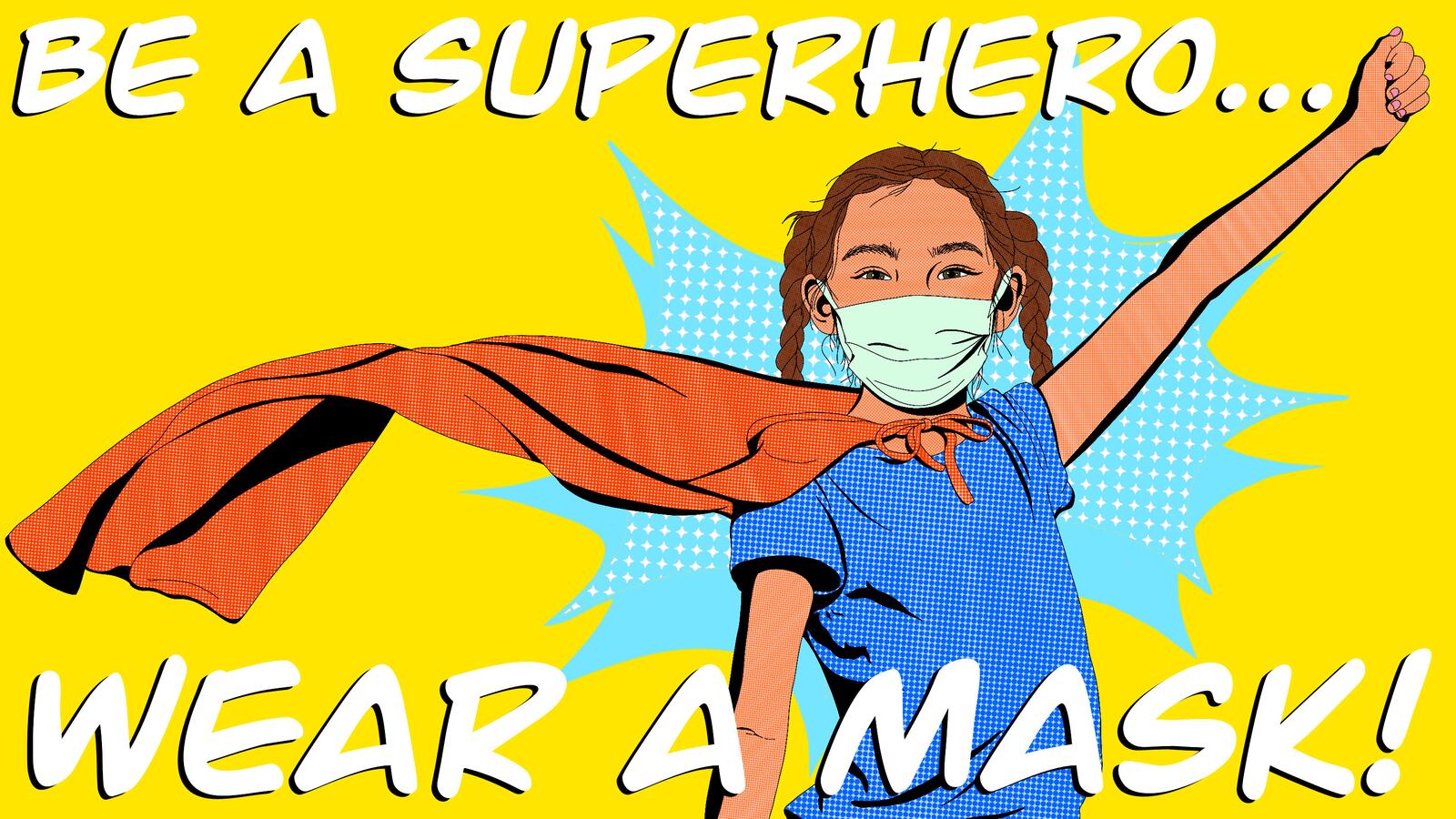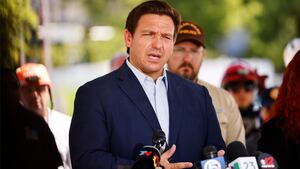Somehow, COVID-19 cases and hospitalizations are accelerating as rapidly and dangerously as they did during last summer’s surge in the southern United States. This time, many governors aren’t just refusing or curtailing social distancing—they are failing kids and teenagers with an unwillingness to better protect them from the risks posed by the Delta variant.
The current approach—a toxic stew of milquetoast vaccine advocacy, anti-mask madness, and phony health freedom rhetoric—is a recipe for failure. More than ever we need pragmatic, committed, and non-ideological leadership.
Among other things, in this moment of crisis, that means we must have mask and vaccine mandates for southern schools.
Here’s the current situation: In low-vaccination areas of states like Louisiana, Florida, Arkansas, Mississippi, and Alabama, we’re seeing COVID-19 infection rates that resemble last year’s summer surge. And now hospitalizations are sharply increasing once again, especially among young adults who refuse COVID-19 vaccines, sometimes putting medical workers in worse spots than ever before. Of greatest concern: a steadily increasing number of unvaccinated children in states like Arkansas, Florida, Louisiana, Mississippi, and Tennessee now being admitted to pediatric intensive care.
Two factors account for the surge among young people in the South. The first: Less than 20 percent of the adolescents in Louisiana, Alabama, and Mississippi, to take just a few examples, are vaccinated, some of the lowest rates in the nation. Vaccination rates among young adults are similarly low.
The other factor is the recent finding that the Delta variant of the coronavirus is far more transmissible or contagious than any other SARS-2 coronavirus variant we’ve seen so far. As has been widely reported, an internal CDC memo concluded that the variant is as infectious as chickenpox, one of the most contagious viruses that hit children hard.
I’m not alone in fearing that the pediatric and young adult COVID-19 hospitalizations we’re seeing now are just the warm-up act, and that COVID-19 is accelerating just as schools are starting to re-open for in-person classrooms. But the scale of the potential horror is not being captured as the country races to move on from our 18-month national nightmare.
By the middle of August, most schools will open to in-person classes in Louisiana and elsewhere in the South; my own Houston Independent School District (HISD) opens Aug. 23. School re-openings could act as an accelerant, resulting in thousands of children and adolescents infected with COVID-19, with many pediatric hospital and pediatric ICU (PICU) admissions.
This confluence of events means the rapid declines in Delta cases in the U.K. in recent weeks may not materialize here. This, in turn, suggests our best hope in forestalling a back-to-school tragedy across the South is to mandate vaccines and masks.
If we don’t, we already know that many young people and children will probably contract COVID-19 as we head into August and September, and many will be hospitalized.
The fact that Delta is as infectious as chickenpox is instructive: In the fall of 2018, the state of North Carolina reported its largest chickenpox outbreak in recent memory, or at least since the chickenpox vaccine was first introduced. In a private Waldorf school, a type of school notorious for high rates of parental vaccine hesitancy and even “anti-vaccine fervor,” 110 of the 152 students were not vaccinated, resulting in 36 students diagnosed with chickenpox in a single day.
Based on this example, it’s fair to expect that many unvaccinated children and adolescents will also contract Delta COVID-19 in southern school districts. We are already getting glimpses of the future, as COVID-19 outbreaks linked to early school openings in south Mississippi have forced a return to virtual classes, while more than 400 Arkansas students and staff in one school district are now in quarantine one week after opening.
Even when kids don’t get sick enough to require hospitalization or pack PICUs, long COVID and its neurological complications are a second concern.
There is strong evidence suggesting approximately one-quarter of infected young adults will experience long COVID neurological and other complications—that is, a saga lasting months, if not longer. Less clear is whether adolescents and younger children will also experience long COVID at similar rates. So far, the studies are few or conflicting or incomplete. Many of them are smaller in terms of number of children enrolled; hopefully, they’ll eventually converge to a more consistent story.
For now, we know that an analysis from Rome, Italy, found that 50 percent of infected children ultimately went on to experience long COVID, with at least one symptom lasting at least four months, while in the U.K. a group known as Long Covid Kids is tracking more 1,200 children with long-lasting symptoms, including many with severe impairments. Still others identify smaller percentages of children with long COVID. This is important to sort out given a not-yet-peer-reviewed report from Oxford University and Imperial College in London suggesting that in adults, grey matter brain degeneration from long COVID may start to resemble that associated with aging or even Alzheimer’s disease.
Still another concern is the potential emergence of even more new variants that flourish when COVID-19 transmission goes unchecked because of low vaccination coverage. Already, a worrisome new B.1621 variant from South America has gained a foothold among unvaccinated populations in Florida. Unless we vaccinate the South, our national epidemic will not end with Delta.
School COVID-19 vaccine mandates for children 12 and up, as well as for teachers and staff, would be the most impactful way to stave off this disaster. Prior to the pandemic, we saw examples of vaccine requirements for school entry working effectively to increase vaccination coverage. However, Alabama, Arkansas, and Florida—all led by Republian governors—have already passed legislation barring public schools from requiring COVID-19 vaccines. The drivers for this have little to do with protecting child health and everything to do with a destructive (and self-defeating) “health freedom” or “medical freedom” political anti-vaccine movement that first accelerated here in Texas in 2015.
It’s important that governors in all 50 states, including the blue ones, recognize the urgency to implement COVID-19 vaccine school mandates. But the need is much more dire in the South right now.
When it comes to masks, at least, there are some signs of governors in the region responding to the danger signs.
The Democratic governor of Louisiana, John Bel Edwards, has moved to reimpose a statewide mask mandate, while GOP Arkansas Gov. Asa Hutchinson has asked the state legislature to reconsider its previous ban on mask mandates at the local level. Meanwhile, Alabama GOP Gov. Kay Ivey at least was willing to call out unvaccinated people to explain the recent surge there.
Other Republicans are digging in their heels—and setting their children up for an uncertain and risky school year.
Florida Gov. Ron DeSantis just signed an executive order banning school districts from mandating masks, instead insisting that parents have the right to make this decision. Missouri Gov. Mike Parson took the time to go on Fox News last week, a locus of anti-vaccine disinformation, to explain why he would not impose a new mask mandate. And Mississippi Gov. Tate Reeves announced Tuesday he, too, had no interest in a new mask policy.
Without mandates—for COVID-19 immunizations for the eligible kids and school staff, or for masks—our options are limited, and our kids subject to unnecessary health risks. We must step up advocacy and public messaging to encourage parents to vaccinate their adolescent children and bump up rates in the South, while promoting the benefit of masks. In parallel, we must continue to deplatform from the internet the aggressive anti-vaccine non-governmental groups as advocated by the Center for Countering Digital Hate, and continue to court GOP champions, or at least those voices willing to break from this new and self-defeating health freedom conservative orthodoxy.
The grim reality is that we must now prepare for an even steeper rise in hospitalizations, including pediatric hospitalizations and PICU admissions at children’s hospitals. We should also anticipate significant numbers of young adults and children with signs of long COVID, and make a plan for their outpatient follow-up and neuropsychiatric counseling and treatment.
If these recommendations seem modest in scope given the seriousness of the situation at hand, they also reflect a reality that despite months of warning, including my own, there was simply no political will to do more. Schools are opening and pediatricians and pediatric nurse practitioners across the South are holding our collective breath.






